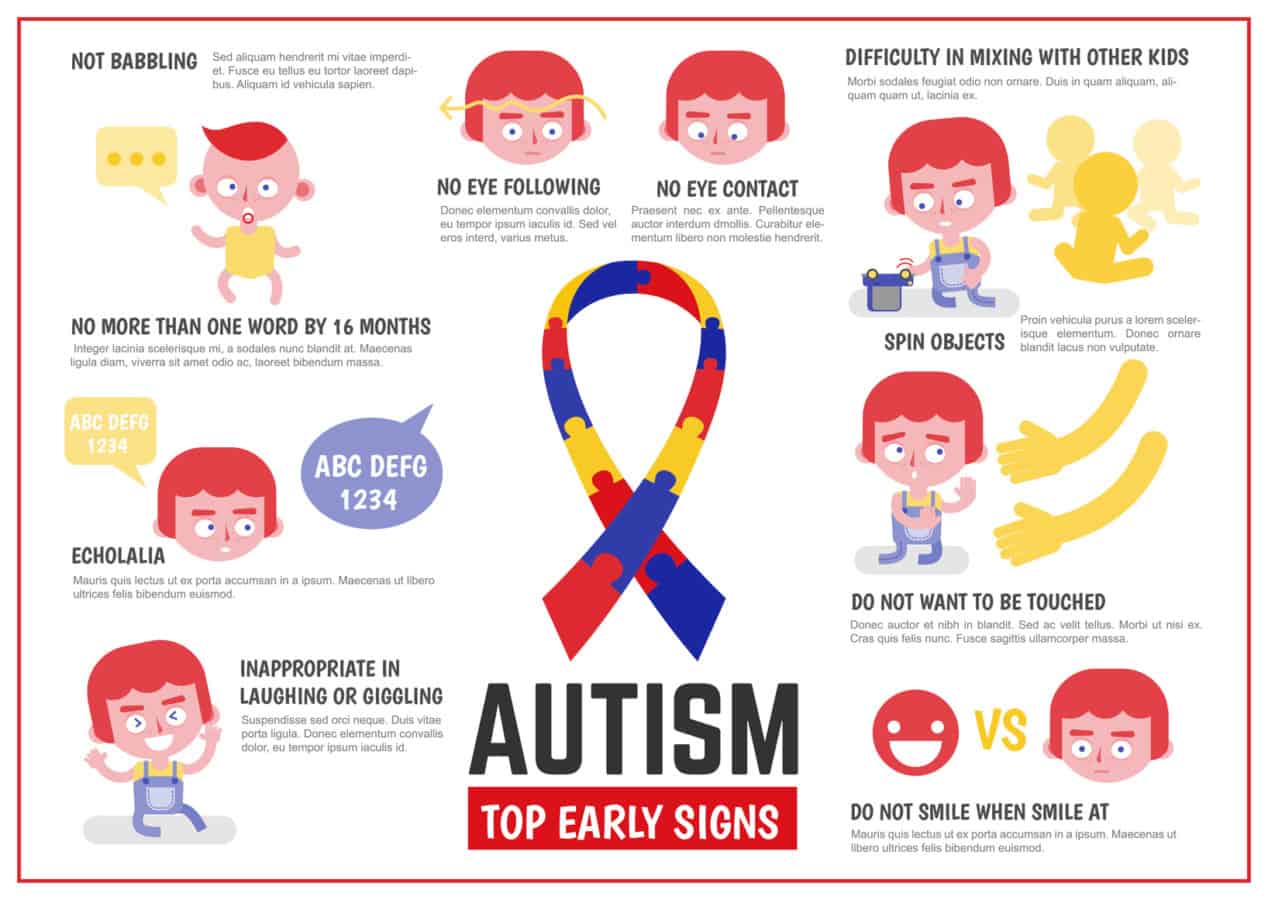Autism, as a highly misunderstood disorder, has been through quite a revolution as its prevalence has increased. According to the CDC, in April of 2018, it was estimated that one in 59 people in the United States are diagnosed with Autism Spectrum Disorder. Boys have a higher percentage of prognosis. It is estimated to affect one in 37 boys compared to one in 151 girls.
With statistics like that, this will undoubtedly have a large effect on the business industry and employment. Many companies in about the last 10 years have made changes within their businesses to accommodate those within the autism spectrum and bring them into the workforce.
One man started a company to create one million jobs for people with autism. Thorkil Sonne, a man from Denmark, created Specialisterne Foundation after becoming the father of a son with autism spectrum disorder. The foundation’s goal is to not only help those with autism to thrive, but to educate and show other industries the great asset that those with autism can bring to an industry.
History of Autism
Autism was first recognized in 1943 by Leo Kanner, an Austrian-American psychiatrist and physician. He recognized the high intelligence and amazing memory of the children and also observed the extreme aloneness and obsessive need to keep things consistent. Similar characteristics had also been observed in those with schizophrenia. In 1952, autism was described as a form of schizophrenia; it was, therefore, considered a psychiatric condition. Many people mistakenly thought the cause to be mothers who were cold and unemotional, or “refrigerator mothers,” as they were labeled.
The idea of autism being a psychiatric condition did not begin to change until 1987; At that time, people began to recognize that autism had a less extreme version, labeled pervasive development disorder with cause unknown. In 1994 and a further revision in 2000, it received recognition as having a spectrum, or range of extremes that included differences of behavior, capabilities, and effects on the individuals.
Five distinct conditions were included under the umbrella of autism besides autism and pervasive development disorder. They were Asperger’s disorder and childhood disintegrative disorder. Both are opposite extremes of the spectrum, with childhood disintegrative disorder being the most extreme in symptoms.
Around 2013, the label of autism was changed to autism spectrum disorder. In 2018, an addition to the description of symptoms specified that autism might be “with or without intellectual disabilities.”
Definition and symptoms of Autism Spectrum Disorder
Autism spectrum disorder (ASD), covers a range of symptoms or behaviors, most recognized by difficulties with social skills, repetitive behaviors, and difficulty with speech and nonverbal communication. Aside from these markers, people with autism may also suffer complication with their gastrointestinal function, seizures, sleep disorders, sensory sensitivities, and mental health issues such as depression, anxiety, and attention issues. Functioning and intelligence varies from case to case, as do the range of the effects of the symptoms. Having met one autistic person does not represent how each one is affected.
Challenges and Benefits of ASD in the Workforce
In 2014-15, it was estimated by the National Autism Indicator Report that only 14% of those with ASD were employed while most are underemployed. Additionally, they are far less likely to pursue education past high school.
Much of this results from individuals and businesses not understanding the disorder and having a general lack of information. Another factor is those with ASD have a lack of what is termed “soft skills.” Soft skills are the ability to communicate, accept feedback, manage time, engage in teamwork, and have social skills.
Although soft skills may present a challenge to those with ASD, they can be taught the skills through simple, clear instructions. They can also benefit from the use of supports such as written instructions, a smart phone or tablet for reminders and schedules, and visual clues in the workplace. For some employees, a job coach may be necessary. A job coach acts to enhance the training and utilize methods to reinforce the learning process.
What employers fail to recognize are the benefits of hiring people with ASD.
Businesses that have hired those with ASD acknowledge several beneficial skillsets:
- High attention to detail
- Highly analytical
- Pattern recognition
- Focused
- Consistent work quality and performance
- Desire for high quality work
- Creative or “out of the box” thinking
- Great with repetitive tasks
- Low turnover rate
- Usually are honest and loyal
An additional side benefit is based on the customer market. Disabled persons make up $3 trillion of the purchase and service market globally while they comprise $220 billion in the U. S. market alone. Another bonus to employing disabled persons is customer appeal. The U.S. public tends to prefer to support a business that is hiring those with disabilities.
Businesses and ASD
In 2015, Microsoft started its initiative for hiring those with ASD. This program, called “Inclusive Hiring for People with Disabilities,” originated in the U. S. According to the director for the program, Neil Barnett, its goal includes helping reduce the unemployment rate of those with ASD. They also felt that these individuals had roles that would be a good match. They recruit for software engineers and data scientists, which requires people to have attention to detail and problem-solving skills.
Microsoft has even adjusted their interviewing process to span over 5 days to allow individuals to truly demonstrate and express who they are. About 50% of the interviewees get hired. Microsoft insures all ASD employees have a work coach and a mentor from the community who also has a disability. Another benefit of hiring ASD workers has been the effects on the managers. They have become better at communicating and providing feedback to their employees.
Other companies that have started an ASD working program include:
- JP Morgan Chase in 2015. They now have 85 people in 20 different roles globally.
- SAP – a German-based multinational software company that began hiring in 2013.
- Hart Schaffner Marx (HSM) is a 131-year-old manufacturing company of men’s suits based out of Des Plains, Il. They started in 2015. They have incorporated exercise in the morning for their employees with ASD because it has proven to help them stay focused, on task, and calmer. Interestingly, they painted yellow lines on the floor to make it easier to traverse the large factory. They also mentioned any extrasensory distractions in their job descriptions or noted if jobs required fine motor skills. Additionally, they changed the bright fluorescent lighting to LED. HSM educated 150 employees to understand autism and how best to interact with employees on the spectrum.
The Goal for 1 Million Jobs for those with Autism
Thorkil Sonne, as mentioned above, is the founder of Specialisterne Foundation. Specialisterne translates from Danish as “The Specialists.” After becoming the President of Autism Denmark, he learned a lot about the challenges for employment. Coming from an IT background of 15 years, he was well-versed in which job skills are crucial. ASD individuals have a tendency to pay attention to detail, focus, analyze and have other traits that prove crucial in today’s job market.
After doing research on people with autism, he formed Specialisterne Foundation. It is a not-for-profit organization with a mission to collect and share knowledge to help people with autism to thrive and succeed in the labor market.
The plan to assist people with autism is based on:
- Supporting the development and international success of Specialisterne, sustained by local businesses that base their business model on evaluating, training, and employing people with autism
- Supporting stakeholders in the integration of people with autism into the labor market.
- Enlightening people to respect and be aware of the skills and rights of people with autism.
- Helping employers see the advantages of employing those on the autistic spectrum.
He has employed autistics within his foundation in the roles of software testing, programming, and data entry. He has a 6-month assessment program where the candidates go through a variety of different exercises, tasks, and work situations. This enables the hiring committee to fully observe their skillsets and personalities. Additionally, he operates a 3-year education program for not just autism, but for ADD, ADHD, OCD, and Tourette’s syndrome as well. It is designed to not only educate about subjects; it also should provide a well-rounded education around social and cultural differences, health, and social behavior.
Specialisterne has other business providers who operate as partners. IBM has partnered with Specialisterne and has announced plans to create 300 new jobs for individuals with ASD globally.
Specialisterne has stated that it is their goal to create one million jobs for those with autism and has included their strategy on their website:
We have set our goal: To provide meaningful and productive jobs for one million people with autism.
Our strategy is to:
- Replicate Specialisterne operations around the world to showcase and demonstrate the skills and contribution of autistic people
- Assess and train autistic people for an active role in the labor market
- Assess the markets in which autistic people can perform valuable tasks
- Develop and share a management model, The Dandelion Model, that will enable companies and workplaces to hire and manage autistic people
- Increase awareness in society of the positive contributions of autistic people
Summary
Autism Spectrum Disorder has come a long way in how it is diagnosed, the understanding of symptoms and treatments, and how society views it. Thankfully, individuals with ASD are now being seen as valuable assets with a unique skillset. More and more companies around the world are looking to utilize Specialisterne’s model or other similar models in the interest of hiring these special people.
Are you a business interested in aiding in this endeavor to provide jobs for 1 million people with ASD? If so, then check out this page from Autism Speaks with information from ADVICE, a program that helps companies to make accommodations in training, hiring, and creating an environmentally friendly work area.




















